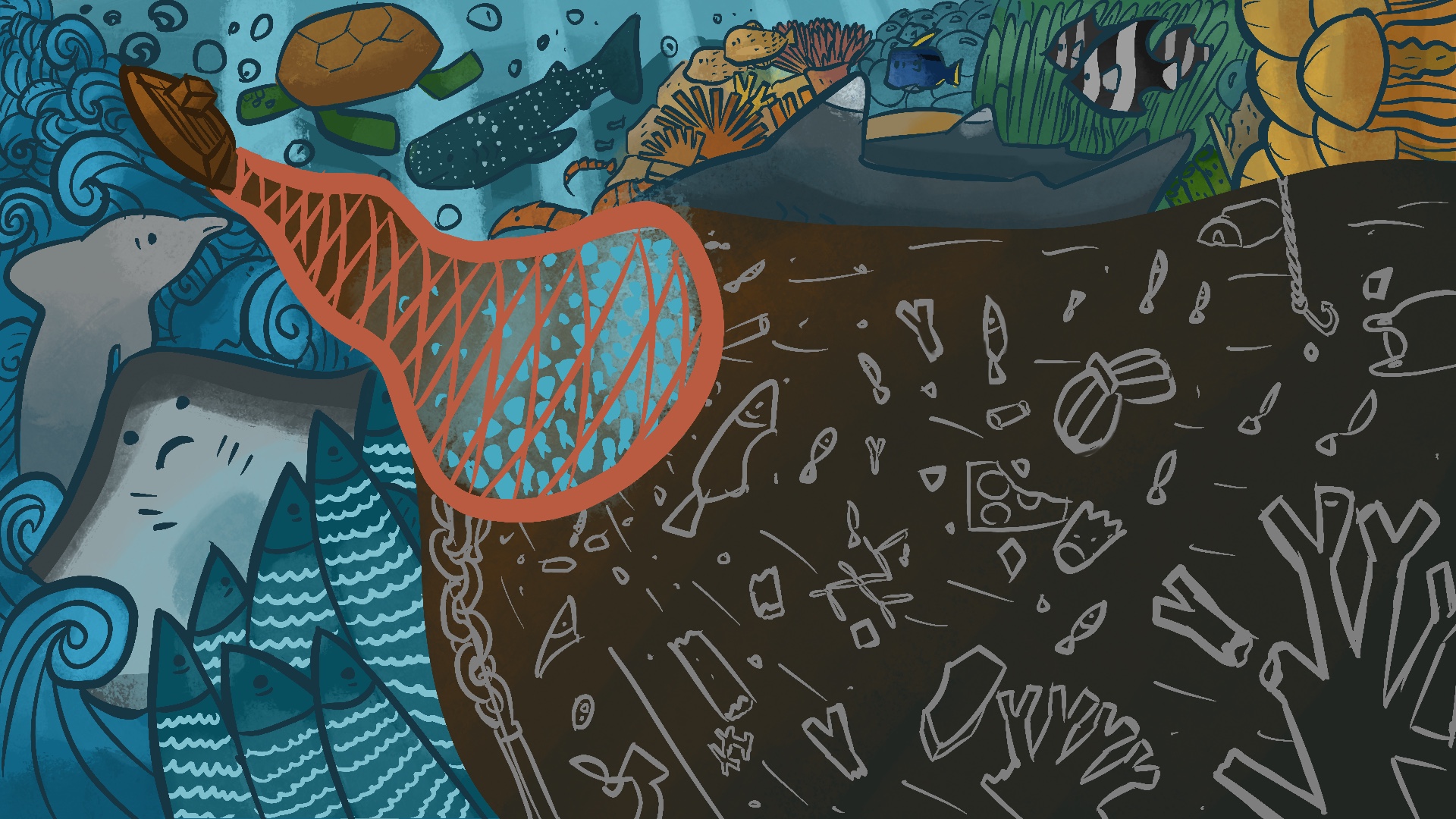
Teeming with diversity and life, the Earth’s oceans shelter more than 300,000 marine species. They also generate 70 percent of the planet’s oxygen and are the primary source of protein for close to a billion people. However, the oceans’ supposedly endless abundance of resources is now being depleted as humans trawl aquatic fauna faster than our planet can replenish—pushing many ecosystems to the brink of collapse.
Trawling it all away
With the growth of the global population came a growing demand for food—as well as harmful industry practices that are the product of global overconsumption. This demand has pushed many governments to spend billions of dollars on subsidies for damaging fishing practices, despite their commitment to eradicate them.
This money is what props up bottom trawling, an industrial fishing method that uses large nets to scrape everything off the seafloor. These fishing nets can measure up to two miles long and are anchored hundreds of feet deep, having little to no control of the catch as the nets hog everything in their path. Since trawling nets are non-selective, other marine species are captured and later discarded dead overboard. This inadvertent hauling of species is known as “bycatch”, where animals such as sea turtles, albatross, and cetaceans are caught by fishing nets that are targeted for smaller animals. The process also destroys ecosystems at the lowest region of the ocean—the benthic zone—which may take decades to recover.
“Not only do [fishermen] kill the fish that live there but they also destroy the [marine] ecosystem after trawling,” contends Frederik Jutfelt, an associate professor at the Norwegian University of Science and Technology.
Although new technologies have revolutionized fishing methods, they have also contributed to a cascading ecological collapse across the oceans. Propelled by fishing industries, the prevalence of satellite navigation, dynamite fishing, scallop fishing, and trawling gear today leads to overfishing that disrupts ecosystems and may later threaten the global fishing industry.
A “plasticarian” diet
In addition to the said fishing methods, plastics also contribute to the destruction of marine life and ecosystems. According to the International Union for Conservation of Nature, around eight million tons of plastics are discarded into oceans annually, comprising about 80 percent of marine debris.
Such trash harms marine ecosystems in various ways. Species such as seabirds, whales, and turtles are known to ingest large plastics (macroplastics) such as plastic bags and straws. Further, on an annual basis, approximately one million seabirds and 100,000 marine mammals perish due to plastic ingestion.
While plastic bags and straws are major contributors to ocean pollution, discarded fishing equipment, known as ghost fishing gear also harm the oceans as t approximately 500,000 to one million tons of fishing gear are lost to sea annually.
But perhaps the greatest threat to our oceans today are microplastics, the physical and biological breakdown of plastic marine debris, which pose a greater threat compared to macroplastics as marine species can easily ingest these particles.
“Microplastics [are] any plastics that [get] broken down into tiny pieces,” Jutfelt elucidates. The absorption of microplastics can cause abnormalities within the digestive system of marine organisms and degrade their eating habits, both of which reduce growth rates and stunt reproductive functions.
Ritual slaughter
Apart from dynamite fishing and bottom trawling, whaling is another controversial fishing activity that has garnered international attention. One of the more contentious whaling practices is known as “grindadráp”, a Faroese tradition where pods of pilot whales are slaughtered for their meat and blubber.
Environmental groups argue that mercilessly capturing a pod and driving them onto the beaches is unethical, with many groups labeling it an “insane bloodsport” as an average of 800 whales are hunted down annually.
Jutfelt furthers that whale hunting may lead to their imminent endangerment as the number of whales slaughtered may increase in the succeeding years. He notes that “[Whales] can’t quickly rebound…it takes a long time for them to be restored” in comparison to other marine species because of their slow growth rate and inability to produce calves in great numbers.
Although this issue on whale slaughter has caught the attention of the public, the Faroese government contends that whale hunting provides local communities with food and that the practice is regulated by law. It also maintains that grindadráp is sustainable and encourages concerned individuals not to be preoccupied with the issue.
However, while Faroese locals claim the practice is sustainable, Jutfelt questions the ethicality of the current whaling practices, “I think the rules are working quite well and the numbers taken are very low by these countries and I don’t think it’s a threat to the sustainability of the population, but, I still think it shouldn’t be done.”
The heart of the ocean
It is evident that commercial fishing practices have caused large-scale marine ecological disruption and the decline of marine species. Viewing the oceans as an infinite resource is what leads to their degradation. If we continue to see the oceans as a benign provider of our needs, without recognizing the cost of man-made damage, ecosystems will be unable to replenish and ultimately cause harm to mankind.
As such, improving fishing practices to lessen or prevent the ecological damage they can cause remains a priority so marine ecosystems can flourish while simultaneously providing the necessary resources for humanity.
As Jutfelt puts it, “We need to ensure good welfare and humane handling of the animals” for once our environment is severely affected, it is only a matter of time before our lives are put at stake.

Leave a Reply